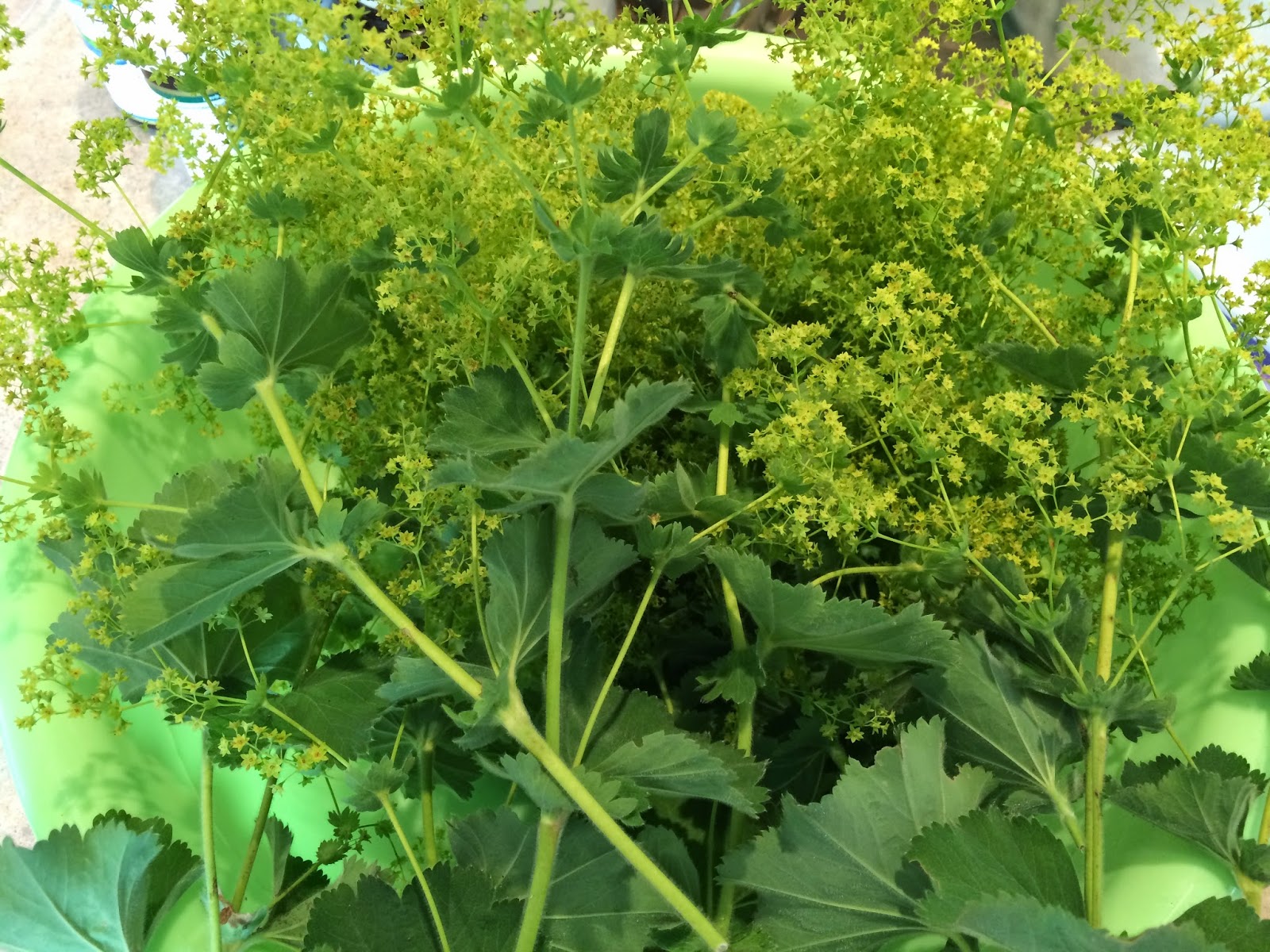The picture above is of the lady's mantle growing in my garden, this photo was taken about three seconds before I took my garden trimmers and butchered the new leaves and flowers (of course leaving some on the plant). Lady's mantle is an amazing herb which is used for the treatment of many issues associated with menses, fibroids, infected and weeping wounds, and many other things which I will visit later in the post.
Lady's mantle is most definitely my favorite herb for June, its beautiful green leaves and soft yellow flowers are soft and fresh and reminds me of the warm months and long days ahead.
I would like to post one local herb a month (poke me if I fall behind) and give the full monograph for its use . So, without further delay, here is some relatively boring info about an amazing medicinal plant.
Latin Name: Alchemilla monticola
Family: Rosaceae
Common Name: Lady's Mantle, Lion's Foot, Bears Foot, Nine Hoots, Leontopodium, Stellaria
Related Specie: A. arvensis, A. alpina
Botany:
Habitat: Native of the American Andes, common to Britain and the colder regions of North America, and on high-lying ground, being found up to an altitude of 3600 feet and freely found beyond the arctic circle in Europe, Asia, Greenland, and Labrador.
Description: A perennial plant, the rootstock is black, stout, and short, the plant rising from it with slender stems. The whole plant is clothed in soft hairs. The lower leaves are large, 6 to 8 incesh in diameter and have slender stalks 6 to 18 inces long, the leaves being somewhat kidney shaped with scalloped edges. The flowers bloom from June to August and are numerous and small, only about 1/8 of an inch in diameter, being yellow/green in color in loose and divided clusters at the end of the branching stems.
Cultivation: The plant grows from a seed planted in the spring or from root clippings.
Parts Used: Leaves, Flowers, Root
Harvest: The whole herb is of use and is best in June -hang to dry. Root is harvested in the fall and should be used fresh.
Medicinal Actions: Astringent, Styptic, Vulnerary, Diuretic, Anti-inflammatory, Emmenagogue, Vulnerary, Hemostatic, Alterative, Menstrual Regulator, Tonic, Anti-Pyretic, Anti-Hemorrhagic, Digestive Tonic.
Constituents: Flavonoids, Tannins (mainly ellegitannins including dimer agromoniin and laevigatiin), Glycosides, Ellagic Acid, Salicylic Acid
Pharmacy: (Consult an Herbalist for Dispensing)
Tincture: 1:5 in 25% alcohol, dispense at 2 to 4ml 3 x daily. May be taken up to 1:1 concentration
Infusion: 2 tsp. dried herb to 1 cup boiling water. Steep 15 minutes, drink 3x daily
Dried Herb: 2 to 4g daily
Vaginal Douche (Cause everyone wants to know this): 2oz infusion to 2 pints (60g dried herb to 1 liter water). Boil water, infuse for 30 minutes. Allow to cool to a comfortable temperature, inject warm for leucorrhea, candida, inflammation.
Uses: Most commonly used as a female medicine, this herb can be used for the following.
- Acute diarrhea
- As a gargle or mouthwash after teeth extractions
- Mouth Sores
- Mouth Ulcers
- Laryngitis
- To stimulate appetite
- Peptic Ulcers
- Gastroenteritis
- Internal Bleedings
- Colitis with Bleeding
- Hormonal Balancer for Irregular Menses
- Menstrual Cramps, Fibroids, Endometriosis
- Symptoms of Menopause
- Vaginal Douche for Candida
- Topically for bleeding
- Topically for weeping eczema
- Topically for Sores, Wounds, and Cuts
- Rheumatism
- Do not use while pregnant - it is generally used to aid labor
- No drug interactions reported
To Cover My A$$:
- I am not a Doctor, I am a student of Herbal Medicine. The above information is not meant to diagnose or treat. The gathered information is from personal knowledge and knowledge from the standard the materia medica, and from herbal tradition spanning nearly five thousand years of written information, but hey, who's really counting -right?


No comments:
Post a Comment